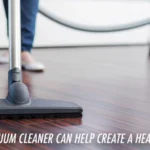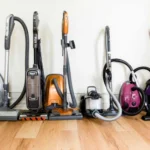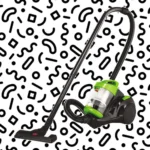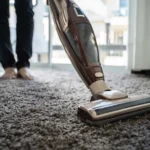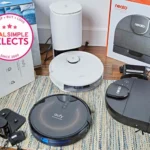When it comes to keeping our homes tidy, vacuum cleaners have become a must-have in our cleaning arsenal. However, with so many different types and models available, choosing the right one can be quite perplexing. Two popular options in the market are upright and canister vacuum cleaners. But what sets them apart? Which one is more suitable for your needs? In this article, we’ll dive into the main differences between these two types of vacuum cleaners. We’ll cover everything from their design and cleaning efficiency to their maneuverability and price. By the end, you’ll have a clearer understanding of which vacuum cleaner is right for you. So, let’s get started!
Design and Mobility
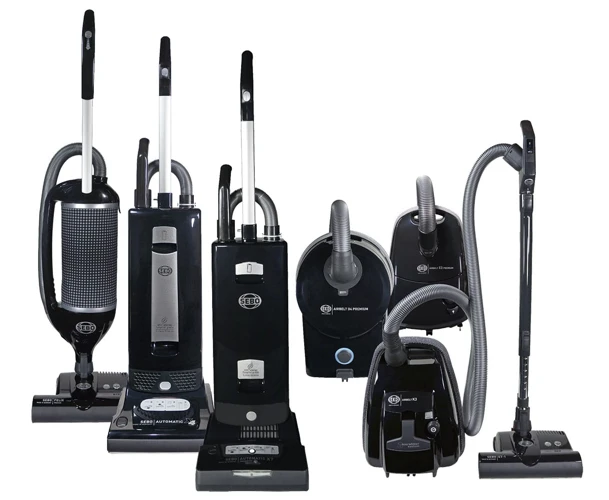
The design and mobility of a vacuum cleaner can make all the difference in your cleaning routine. There are two main types of vacuum cleaners: upright and canister. Each has its own unique design and mobility features that are important to consider before making a purchase. The upright vacuum cleaner is a classic style that has been around for decades, while canister vacuums are gaining in popularity for their versatility and maneuverability. In this section, we’ll explore the design and mobility features of both types of vacuum cleaners, so you can make an informed decision about which one is best for your home. But first, let’s take a closer look at the key differences between an upright and canister vacuum.
Upright Design
An upright vacuum cleaner is designed to stand upright and has the motor and dustbin positioned in the body of the vacuum. This design creates a more effortless cleaning process for the user because they can push the vacuum back and forth with less strain on their back. Upright vacuum cleaners are also great for those who have larger homes because they cover more surface area with each pass. Here are some key design features of an upright vacuum:
- Wider Cleaning Path: The cleaning path on an upright vacuum cleaner is wider than that of a canister vacuum. The brush roll and suction cover more area with each pass, so you can clean your home faster.
- Height Adjustment: Most upright vacuums come equipped with adjustable height settings. This feature allows users to raise and lower the vacuum head to match the height of the carpet or flooring they are cleaning.
- Easy to Store: Upright vacuum cleaners are designed to stand upright, which makes them easy to store in a closet or corner of a room without taking up too much space.
- Heavy: One downside to an upright vacuum is that they tend to be heavier than canister vacuums. This can make them more difficult to maneuver up and down stairs or around tight corners.
Despite their heavier weight, upright vacuum cleaners are still a popular choice for many homeowners because of their wide cleaning path and easy-to-store design. Upright vacuums tend to be more affordable than canisters, making them a great option for those on a budget.
Canister Design
Canister vacuums have a different design than upright vacuums. The canister vacuum cleaner is composed of two separate parts- a wand and a canister that contains the motor and dustbin. The wand is attached to the canister by a hose, allowing for increased flexibility in cleaning.
The canister design makes it easier to clean stairs, upholstery, and tight spaces as the wand can be separated from the canister and used independently. Canister vacuums also tend to be lighter and more compact than their upright counterparts which makes them easier to store in small spaces.
Canister vacuums offer a wider range of cleaning attachments, such as crevice tools and dusting brushes, which can be used for cleaning purposes beyond basic carpet cleaning. They are also usually quieter than upright vacuums.
However, canister vacuums are not as effective at cleaning carpets as upright vacuums. They are best suited for cleaning hard floors or low-pile carpets. They also require more floor space to maneuver because of the separation of the wand and canister.
Below is a table summarizing some of the key differences between upright and canister vacuums:
| Design and Mobility | Cleaning Efficiency and Power | Best for Carpets | Best for Hard Floors | Maneuverability | Noise Level | Price | Accessories | Maintenance and Storage |
|---|---|---|---|---|---|---|---|---|
| Upright Design | Upright Efficiency | ✓ | ✓ | ✗ | Medium-High | $$-$$$ | Limited | Store in closet or storage space |
| Canister Design | Canister Efficiency | ✗ | ✓ | ✓ | Low-Medium | $$-$$$ | Wide range of attachments | Store parts separately, may require more space |
Canister vacuums are a great choice for those looking for a versatile and compact option that can clean hard floors and tight spaces effectively. However, they may not be the best choice for those with extensive carpeting or limited floor space. For more information on upright vacuums, check out our article on the best upright vacuum for your home.
Cleaning Efficiency and Power
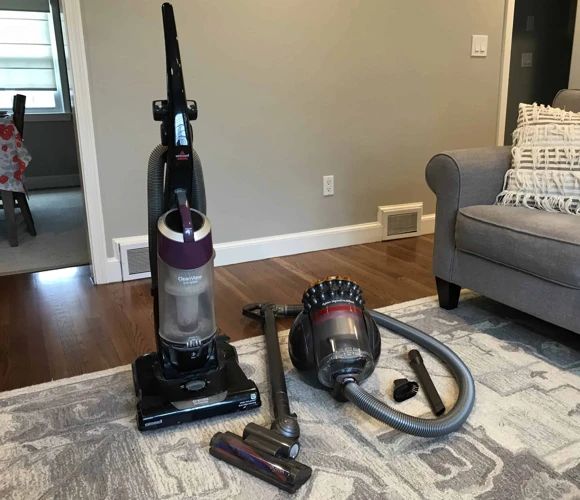
When it comes to choosing a vacuum cleaner, the cleaning efficiency and power are essential factors to consider. After all, the primary purpose of a vacuum cleaner is to clean the surfaces effectively. Both upright and canister vacuums offer varying degrees of cleaning power and efficiency. However, each has its strengths and weaknesses. Let’s delve deeper into the differences between the two and explore their unique features. But before we do, if you want to learn more about how to increase the efficiency of an upright vacuum, check out our most effective upright vacuum tips.
Upright Efficiency
When it comes to cleaning efficiency and power, upright vacuum cleaners have some advantages over canister vacuums. One of the main advantages is their ability to deep clean carpets.
Upright vacuum cleaner suction power is typically stronger than that of most canister vacuums, which means they can more effectively remove dirt and debris from the fibers of carpets. Many upright vacuums also come with a motorized brush roll, which helps to agitate the carpet fibers and lift dirt and dust from deep within the carpet.
Most upright vacuums also have larger dustbins than canister vacuums, which means they can hold more dirt and debris before needing to be emptied. This is particularly helpful when vacuuming larger areas, as it means you won’t need to stop and empty the dustbin as frequently.
Another factor that contributes to the efficiency of upright vacuums is their ability to easily transition from cleaning carpets to hard floors. This is due in part to their motorized brush roll, which can be turned off to prevent damage to hard floors.
However, it’s important to note that while upright vacuum cleaners are efficient at cleaning carpets, they may not be as effective at cleaning hard floors as canister vacuums. This is because the suction head of upright vacuums is often larger and less maneuverable than that of canister vacuums, which can make it more difficult to clean in tight spaces or around furniture.
If you have mostly carpeted floors in your home, an upright vacuum cleaner may be the more efficient choice for you. Just be sure to choose a model with strong suction power and a motorized brush roll for the best cleaning results.
| Pros | Cons |
|---|---|
| Strong suction power | Can be heavy and bulky |
| Motorized brush roll for deep cleaning carpets | May not be as effective on hard floors |
| Larger dustbin for more efficient cleaning | May be less maneuverable than canister vacuums |
If you’re interested in learning more about the top features of upright vacuums, click here for our detailed guide. And if you already own an upright vacuum, be sure to check out our tips for cleaning and replacing filters here, as well as our maintenance tips here and common issues and fixes here.
Canister Efficiency
When it comes to cleaning efficiency and power, canister vacuums have some advantages over their upright counterparts. Here is a breakdown of the main factors that contribute to their efficiency:
| Factor | Description | Advantages |
|---|---|---|
| Suction Power | Canister vacuums typically have stronger suction power due to their advanced motor technology, which allows them to clean deeply embedded dirt and pet hair more effectively. | Deep cleaning capabilities for all types of surfaces. |
| Attachments | Canister vacuum cleaners come with an array of attachments, such as crevice tools, dusting brushes, and upholstery tools. These attachments allow them to clean much more thoroughly and precisely than an upright vacuum. | Improved cleaning capabilities for tight spaces, and delicate surfaces. |
| Bagged vs. Bagless | Canister vacuums typically come with a dustbin or a bag. Bagged models tend to have more consistent suction while bagless models require frequent emptying. | Bagged models deliver better suction performance and filter dirt better, while bagless models are more convenient since there’s no need to buy and change bags. |
| Filtration System | Canister vacuums tend to have better filtration systems. They may be equipped with multiple filters, such as a pre-motor filter, a micro-filter, and a HEPA filter, which capture more allergens and dust particles, leaving the air cleaner. | Improved air quality and less exposure to allergens for people with allergies or respiratory issues. |
Canister vacuums tend to offer superior cleaning efficiency and power compared to upright models due to their strong suction power, a wide range of attachments, and better filtration systems. Additionally, they are typically better equipped to handle different floor types and tight spaces.
Carpet and Floor Type

When it comes to finding the perfect vacuum cleaner, one of the most important factors to consider is the type of flooring you have. The texture and surface of your floors can determine the type of cleaner that will work best for achieving clean and dust-free living spaces. Whether you have plush carpets or hard floors, each type requires specific care and maintenance. In this section, we’ll compare upright and canister vacuum cleaners to see which one shines when it comes to cleaning carpets and hard floors.
Best for Carpets
When it comes to cleaning carpets, both upright and canister vacuum cleaners have their advantages and drawbacks. While upright vacuums are typically better at deep cleaning carpets due to their powerful suction and motorized brush roll, canisters are lighter and more versatile, which makes it easier to reach tight areas and spot-clean specific spots.
Here is a comparison table of the main attributes of both types of vacuum cleaners when it comes to cleaning carpets:
| Attribute | Upright Vacuum Cleaners | Canister Vacuum Cleaners |
|---|---|---|
| Suction Power | Uprights are typically more powerful and effective in deep cleaning carpets due to their direct suction and motorized brush roll. | Canisters may not have the same suction power as uprights, but they are more effective in removing dirt and debris from tight areas and corners. |
| Maneuverability | Uprights can be heavier and more difficult to maneuver, especially on thicker carpets, due to their design and bulk. | Canisters are usually more lightweight and have a greater range of motion, which makes them more maneuverable and easier to navigate around furniture and objects. |
| Filtration | Uprights may have better filtration systems that can capture allergens and fine particles, which is particularly important for people with allergies or asthma. | Most canisters have good filtration systems as well. They usually use a combination of filters, including HEPA filters or other advanced technologies. |
| Noise Level | Uprights can be noisier due to their powerful motor and direct suction, which can make them less ideal for use in quiet environments or at night. | Canisters are usually quieter, especially those with advanced noise-reduction features or sound-dampening materials. |
| Price | Uprights can be more expensive, especially those with advanced features such as self-propulsion, smart navigation, or high-end filtration systems. | Canisters are usually more affordable, but they may require additional attachments or accessories for specific carpet cleaning tasks. |
Ultimately, the best vacuum cleaner for carpets will depend on your specific needs, preferences, and budget. Whether you choose an upright or a canister, make sure to consider key factors such as suction power, maneuverability, filtration, noise level, and price.
Best for Hard Floors
When it comes to hard floors, canister vacuum cleaners have a distinct advantage over their upright counterparts. Here’s why:
1. Suction Power: Canister vacuums often have stronger suction power, especially on hard floors. They can pick up dirt and debris without scratching the surface, making them ideal for hardwood, tile, and laminate floors.
2. Tools: Canister vacuums come with a range of specialized tools that make cleaning hard floors easier. These tools include crevice tools, dusting brushes, and specific floor brushes. Some canister vacuums also have rotating heads that allow you to switch between carpet and hard floor modes.
3. Maneuverability: Canister vacuums are easier to maneuver on hard floors because the head is separate from the body. This means you can use the wand and hose to clean under furniture, along baseboards, and in tight spaces more easily.
4. Gentle Brush Roll: Some canister vacuums have a soft brush roll that’s gentle on hard floors but still picks up dirt and debris. This is particularly useful for surfaces that scratch easily, such as hardwood floors.
5. No Beater Bar: Upright vacuums often have a beater bar or rotating brush that can scratch hard floors. Canister vacuums, on the other hand, don’t have a beater bar, which means they’re less likely to damage your floors.
Canister vacuums are the better choice for hard floors. They offer more power, tools, and maneuverability, as well as gentle brush rolls and no beater bars that can cause damage. If you have a lot of hard floors in your home, a canister vacuum is definitely worth considering.
Maneuverability
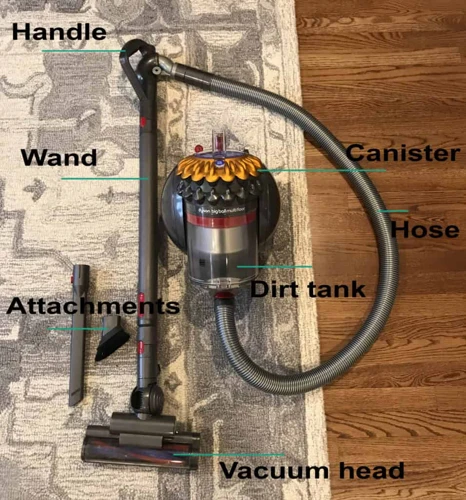
Cleaning your house is an essential task that requires the right equipment. When choosing a vacuum cleaner, maneuverability is a crucial factor to consider. You want a vacuum that can easily navigate around furniture and tight spaces without causing any inconvenience. Let’s take a closer look at how both upright and canister vacuums perform in this area.
Upright Maneuverability
When it comes to maneuverability, upright vacuums might not be the best choice for everyone. They are generally heavier and bulkier compared to their canister counterparts, which can make them harder to maneuver around tight corners and small spaces. However, there are still some models that have improved on this feature.
One of the advantages of upright vacuums is that most are designed with swivel steering to provide greater control and movement around obstacles. They also have a lower profile, allowing them to fit under furniture with ease. However, the length of the cord can be a hindrance to mobility, as you need to keep switching power outlets if you have a large area to clean.
To help you better understand the maneuverability of upright vacuums, let’s put it all into a table:
| Upright Maneuverability | Pros | Cons |
| Swivel Steering | Better control and movement around obstacles | N/A |
| Low Profile | Can fit under furniture with ease | N/A |
| Power Cord Length | N/A | Needs to switch power outlets regularly |
While these pros and cons might be subjective and vary depending on your cleaning needs and preferences, it is important to consider them when deciding whether an upright vacuum is the right choice for you.
Canister Maneuverability
When it comes to maneuverability, canister vacuum cleaners have the upper hand. The canister design makes it easier to clean tight spaces and hard-to-reach areas, such as under furniture, corners, and staircases. Additionally, the canister itself is lighter, making it easier to carry around the house. The hose and nozzle are also more flexible, allowing for seamless movement.
Canister vacuums come with a variety of attachments that further enhance their maneuverability, such as crevice tools, dusting brushes, and upholstery tools. These attachments can easily be switched out, allowing for efficient cleaning of different surfaces and areas. Furthermore, the canister design also makes it easier to clean above-floor surfaces, such as curtains and ceiling corners.
However, on the other hand, canisters can be more difficult to navigate on carpets, especially if they have a heavier head. The hose and nozzle can also get tangled or caught on furniture, requiring more effort to untangle and move around. Additionally, the canister itself takes up more space and can be harder to store in comparison to an upright vacuum, which can stand up and take up less floor space.
Canister vacuums are a great choice for those looking for a highly maneuverable vacuum that can easily clean various surfaces and hard-to-reach areas around the house. However, it may not be the best option for those with heavily carpeted homes or limited storage space.
Noise Level

When it comes to vacuum cleaners, one aspect that many people overlook is the noise level. Nobody wants to use a vacuum cleaner that sounds like a jet engine taking off in their living room. So, let’s take a closer look at the noise level of upright and canister vacuum cleaners.
Upright Vacuums: These types of vacuums tend to be louder than their canister counterparts. That’s because they have a motorized brush roll that spins at a high speed to help agitate dirt and dust from carpets. However, not all upright vacuums are created equal in terms of noise levels. Some models are designed with noise-reducing technology that can make them quieter than others.
Canister Vacuums: Canister vacuums are generally quieter than upright vacuums. That’s because the motor is located in a separate canister from the nozzle and hose. This design allows for better noise insulation and reduces the amount of noise that is produced. However, there are still some canister vacuum models that are louder than others.
So, which one is quieter? Well, it ultimately depends on the specific model and brand of vacuum cleaner you choose. Both types have a range of noise levels, so it’s important to read reviews and do your research before making a purchase.
If you’re particularly sensitive to noise, you may want to look for vacuum cleaners with noise-reducing features such as insulated motors and soundproofing materials. Additionally, using a vacuum cleaner with smaller attachments or choosing low-speed settings can help to reduce noise levels.
While noise level may not be the most important factor to consider when choosing a vacuum cleaner, it’s certainly something you don’t want to overlook. A vacuum cleaner that is too loud can be disruptive and unpleasant, making cleaning your home a chore you’d rather avoid.
Price
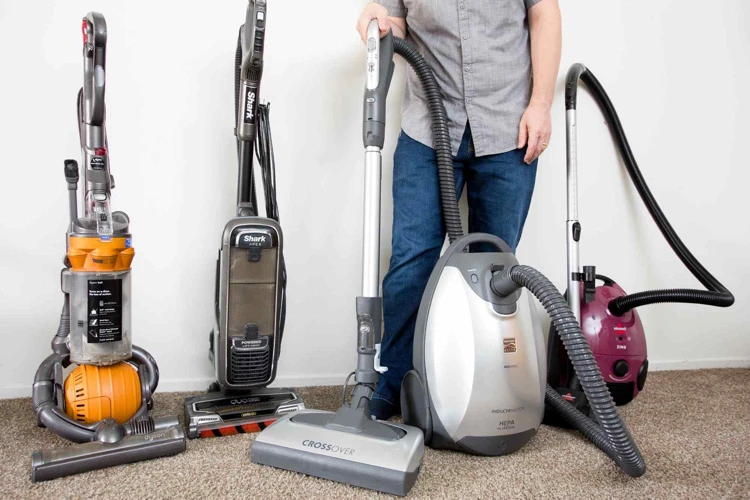
One of the most crucial factors to consider when purchasing a vacuum cleaner is the price point. Upright vacuum cleaners are generally more expensive than canister vacuum cleaners. The reason behind this is because upright vacuums come equipped with more powerful motors and larger cleaning heads that ensure a deep clean of carpets and upholstery. However, these features come at a premium, and therefore you’ll pay more for an upright vacuum than a canister option.
On the other hand, canister vacuum cleaners are comparatively cheaper and provide excellent value for money. Though they may not be as powerful as their upright counterparts, they still produce enough suction to clean most surfaces efficiently. Additionally, because the motor is located outside of the cleaning head, canister vacuums tend to be less prone to malfunctions and require less frequent repairs.
If you’re on a tight budget and are looking for a budget-friendly option, a canister vacuum may be your best bet. Nevertheless, if you’re willing to spend a little bit more and want a more powerful and efficient cleaning machine, then an upright vacuum might be the right option for you. Ultimately, the choice comes down to your individual needs and preferences, as well as your budget.
Accessories
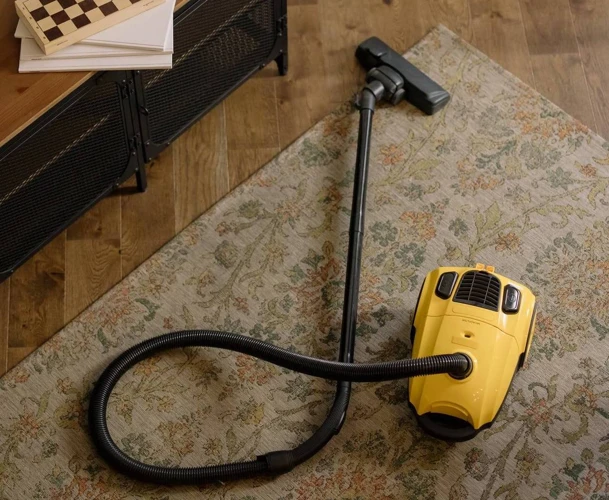
When it comes to vacuum cleaners, accessories can make all the difference in the world. Let’s take a closer look at the types of accessories that typically come with upright and canister vacuums.
Upright Vacuum Accessories:
Upright vacuums usually come with a few accessories, such as a dusting brush, crevice tool, and sometimes an extension wand. These are handy for cleaning tight spaces like baseboards or corners, and the wand helps extend your reach to get up high and down low. Some upright models also include a turbo brush, which is great for deep cleaning carpets.
Canister Vacuum Accessories:
Canister vacuums tend to come with more accessories than uprights, and they’re usually more varied as well. In addition to the typical dusting brush and crevice tool, you can expect a canister vacuum to come with some combination of the following:
– Upholstery tool: great for removing pet hair and dust from furniture and drapes.
– Hard floor tool: gentle enough to use on wood or tile floors without scratching them.
– Soft dusting brush: perfect for delicate surfaces like lampshades or computer keyboards.
– Mattress tool: ideal for removing allergens from your bed.
– Turbo brush: like the one found on some upright models, this is great for deep cleaning carpets.
While canister vacuums certainly come with more accessories, they also tend to be more expensive. If you’re on a tight budget, you may want to go with an upright vacuum and supplement it with a few additional accessories as needed.
Which is Better?
When it comes down to it, this really depends on your cleaning needs. If you have a lot of furniture or delicate surfaces that need cleaning, a canister vacuum may be the way to go. However, if you’re primarily cleaning carpets and want a more affordable option, an upright vacuum with a few key accessories may suffice.
The accessories that come with your vacuum can make a big difference in how effective it is at cleaning your home. Take the time to consider your specific needs and then shop accordingly.
Maintenance and Storage
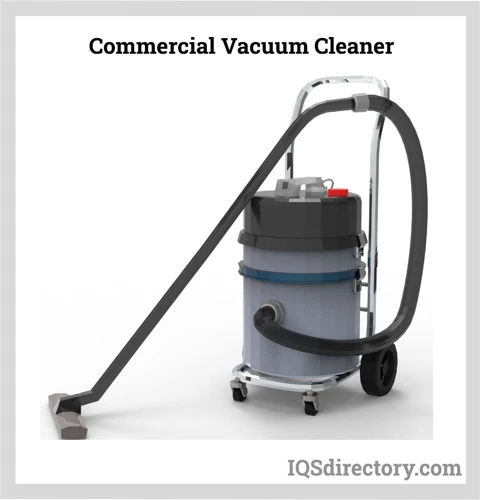
One of the most important factors to consider when buying a vacuum cleaner is how easy it is to maintain and store. After all, a vacuum cleaner is an investment and you want it to last as long as possible.
Maintenance: Upright vacuum cleaners tend to be easier to maintain than canister vacuums. This is because they usually have fewer parts that need cleaning, and the brush rolls can be easily accessed to remove hair and debris. Canister vacuums, on the other hand, have more components that require regular cleaning, such as the canister itself, the hose, and the attachments.
Regardless of the type of vacuum, it’s important to clean or replace the filters regularly to ensure good suction and prevent dust and debris from being released back into the air. Some vacuums have washable filters, while others require replacement filters. Make sure to follow the manufacturer’s instructions for maintaining your particular vacuum cleaner.
Storage: When it comes to storage, upright vacuums take up more space than canister vacuums. However, many upright vacuums now have the option to be compacted or folded down for storage in smaller spaces. Canister vacuums are typically more compact and easier to store in a closet or on a shelf.
No matter what type of vacuum you have, it’s important to store it properly to avoid any damage. Make sure to wind up the cord neatly and store the attachments in a designated area. Additionally, it’s important to avoid storing your vacuum in areas with extreme temperatures or dampness, as this can cause damage to the motor or other components.
Both upright and canister vacuums require some regular maintenance to keep them running efficiently, but upright vacuums tend to be easier to maintain, while canister vacuums are more compact and easier to store. The decision between the two ultimately depends on your personal preference and your specific cleaning needs.
Pros and Cons
When it comes to choosing the right vacuum cleaner, it’s important to consider the pros and cons of each type. Both upright and canister vacuums have their own unique advantages and disadvantages, which can make the decision-making process confusing. In this section, we’ll take a closer look at the benefits and drawbacks of each type, so that you can make an informed decision based on your cleaning needs and preferences. Let’s dive in and explore the strengths and weaknesses of both options.
Upright Pros
When it comes to upright vacuum cleaners, there are several advantages to consider. Here are some of the most noteworthy pros of using an upright vacuum:
1. Great for Carpet: Upright vacuums usually come equipped with a beater bar or brush roll, which helps pick up dirt and debris embedded deep in carpets. This makes them a great choice for households with lots of carpets.
2. Easy to Use: Upright vacuums are generally easier to use than canister vacuums because they only require one hand to maneuver. This can be especially helpful for people with mobility issues or for those who simply want a more convenient cleaning experience.
3. All-in-One Design: Most upright vacuums come with attachments and accessories for cleaning other surfaces besides floors, such as upholstery, stairs, and ceilings. This can make them a versatile cleaning tool for the whole house.
4. Large Capacity: Generally, upright vacuums come with a larger capacity dustbin or bag than canister vacuums. This means you’ll be able to clean more before having to stop and empty the bin or replace the bag.
5. Better for Pet Hair: If you have pets that shed a lot, upright vacuums are an excellent option. Most models come with specialized brushes and tools to help remove pet hair from furniture and floors.
6. Taller Users Benefit: An upright vacuum’s long handle and design make it easier for taller users to clean without having to hunch over, which can be more comfortable and reduce strain on the back.
Upright vacuum cleaners are a solid choice for those who want a powerful, versatile, and easy-to-use cleaning tool that is especially effective on carpets. However, they do have their drawbacks, as we’ll discuss in the next section.
Upright Cons
While upright vacuum cleaners have many advantages, there are some downsides to consider before making a purchase. Some of the most common cons of upright models include:
- Restricted mobility: Due to their weight and bulky design, upright vacuums can be difficult to maneuver around tight corners and under furniture. This can be especially challenging if you have a small space or lots of clutter in your home.
- No versatility: Many upright vacuums are designed solely for use on carpets, which means they’re not suitable for hard floors or other surfaces. This can be an issue if you have a mix of flooring throughout your home.
- Loud noise levels: Compared to other vacuum types, upright models tend to be noisier. This can be a problem if you have young children, pets, or sensitive neighbors.
- Less efficient for tight spaces: While upright vacuums are great for larger, flat surfaces, they may not be the best choice for getting into tight spaces, such as small crevices or around furniture legs.
- Heavier: Due to their larger size and motor, upright vacuums can be heavier than other vacuum types, making them harder to lift and move around as needed.
Despite these cons, upright vacuums remain a popular choice for many households. It’s important to consider your individual needs and preferences before deciding which type of vacuum is right for you.
Canister Pros
When it comes to canister vacuum cleaners, there are several advantages to consider. Here are some of the top pros of these versatile cleaning machines:
- Flexibility: Canister vacuums offer more flexibility than uprights, as they come with a separate wand and hose that make it easy to clean tight spaces, stairs, and upholstery. The wand is also adjustable, making it easier to reach high shelves and ceilings without having to stretch or strain.
- Power: Canister vacuums are equipped with powerful motors, making them highly effective at cleaning carpets, rugs, and hard floors. Additionally, the separate motor and dustbin help to maintain the suction power even when the dustbin is nearly full.
- Quiet: Canister vacuums are typically quieter than their upright counterparts, as the motor is located further away from the user and the cleaning head, reducing the noise level. This makes them a good choice for those who want to clean without disturbing others, or for households with pets or small children who may be sensitive to noise.
- Lightweight: Canister vacuums are generally lightweight and easy to maneuver, thanks to the separate cleaning wand and hose. This makes them a good option for those who have trouble lifting heavier upright models or have to carry the vacuum up and down stairs.
- Versatility: Canister vacuums often come with a range of attachments and accessories, such as crevice tools, brushes, and dusting tools. This makes them a versatile cleaning tool that can be used for a range of cleaning tasks beyond carpets and floors, such as cleaning upholstery, drapes, and even car interiors.
Canister vacuum cleaners offer a range of advantages over upright models, particularly when it comes to flexibility, power, and versatility. However, as with any appliance, there are also some cons to consider, which we’ll explore in more detail later in this article.
Canister Cons
While canister vacuum cleaners have several advantages, they may also have some downsides. Let’s take a look at some of the cons of canister vacuum cleaners in detail:
| Cons | Description |
|---|---|
| Portability | Canister vacuum cleaners, due to their design, can be difficult to move around, especially if you have multiple floors. The canister can be cumbersome, and the hose may get tangled. |
| Storage | Canisters are bigger than uprights, and they can be tough to store in smaller spaces. You might need to dedicate a separate closet or space to keep it, which may not be ideal for everyone. |
| Noisy | Canister vacuum cleaners can be quite loud, and you may not want to use them when other people are around or when your baby is sleeping. |
| Complicated to use | Canister vacuum cleaners may be challenging to use if you are not familiar with how they operate. The controls are distributed throughout the machine, and you may need to switch between them continually, which can be a little complicated. |
| Cost | Canister vacuum cleaners can be a little more expensive than their upright counterparts. You may have to pay a premium for the benefits that they offer, which can be cost-prohibitive for some people. |
While these cons may not be significant enough to deter people from using canister vacuum cleaners entirely, they are worth keeping in mind when you’re shopping for a vacuum cleaner. Ultimately, the decision to choose a canister vacuum cleaner over an upright one will depend on your specific needs and preferences.
Conclusion
In conclusion, the choice between an upright or canister vacuum cleaner largely depends on your specific cleaning needs and preferences. If you have a lot of carpets and need a powerful machine for deep cleaning, an upright vacuum may be the best option. On the other hand, if you have hard floors and need a lightweight and versatile machine, a canister vacuum may be the way to go.
Design and mobility are important factors to consider. Upright vacuums are generally larger and heavier, but they have the advantage of being easier to maneuver around the house, especially on carpets. Canister vacuums are more lightweight and flexible, allowing you to reach tight spaces and clean various surfaces with ease.
Cleaning efficiency and power are also important considerations, and both types of vacuum cleaners offer unique advantages. Upright vacuums are typically more powerful and efficient when it comes to cleaning carpets, while canister vacuums are better suited for hard floors and delicate surfaces, as they have less chance of causing damage.
Maneuverability is another important point. Upright vacuums are easier to move around and they have less parts to manage, while canister vacuums come with longer hoses that offer more flexibility and convenience.
Noise level, price, and accessories are also important factors to consider when choosing between an upright and canister vacuum cleaner. Both types of vacuums have their own unique features and accessories, so it’s important to read reviews and compare models before making a decision.
Maintenance and storage is also a crucial consideration. Upright vacuums are easier to store, as they take up less room in the closet. However, canister vacuums require more maintenance due to the various attachments and hoses that need to be stored properly.
Overall, it’s important to weigh the pros and cons of each type of vacuum cleaner before making a decision. With a wide range of models available for both types, you are sure to find the perfect vacuum cleaner that meets your specific needs and cleaning preferences.
Frequently Asked Questions
What is the main difference between upright and canister vacuum cleaners?
The main difference between upright and canister vacuum cleaners is their design and mobility, as well as their efficiency and power.
Which type of vacuum cleaner is best for carpets?
Upright vacuum cleaners are typically the better choice for carpets, as they have stronger suction and are easier to maneuver over large areas.
Which type of vacuum cleaner is best for hard floors?
Canister vacuum cleaners are generally better for hard floors because they come with specialized attachments that can clean crevices and hard-to-reach areas more effectively.
Do canister vacuum cleaners have good mobility?
Yes, canister vacuum cleaners are known for their excellent mobility, as they are lightweight and can easily maneuver around furniture and into tight spaces.
Are upright vacuum cleaners more efficient than canister vacuum cleaners?
Upright vacuum cleaners are generally more efficient for carpets, as they have stronger suction and can pick up more dirt and debris in one pass. Canister vacuum cleaners, on the other hand, are more efficient for hard floors.
Are canister vacuum cleaners quieter than upright vacuum cleaners?
Canister vacuum cleaners are often quieter than upright vacuum cleaners, as the motor is located in a separate canister and there is more insulation between the motor and the user.
How easy is it to store an upright vacuum cleaner?
Upright vacuum cleaners are typically larger and bulkier than canister vacuum cleaners, so storage can be a challenge. However, many models come with folding handles or detachable components to make storage easier.
What accessories are included with canister vacuum cleaners?
Canister vacuum cleaners usually come with a range of specialized attachments, such as a crevice tool, dusting brush, upholstery tool, and hard-floor nozzle.
How often do vacuum filters need to be replaced?
The frequency of filter replacement depends on the specific model of vacuum cleaner and how often it is used. Some filters need to be replaced every few months, while others can last up to a year with proper care and maintenance.
Can vacuum cleaners prevent allergies?
Vacuum cleaners with HEPA filters can help prevent allergies by trapping small particles like dust, pollen, and pet dander. However, regular cleaning of the vacuum cleaner’s filter and dustbin is also important to prevent allergens from escaping back into the air.

